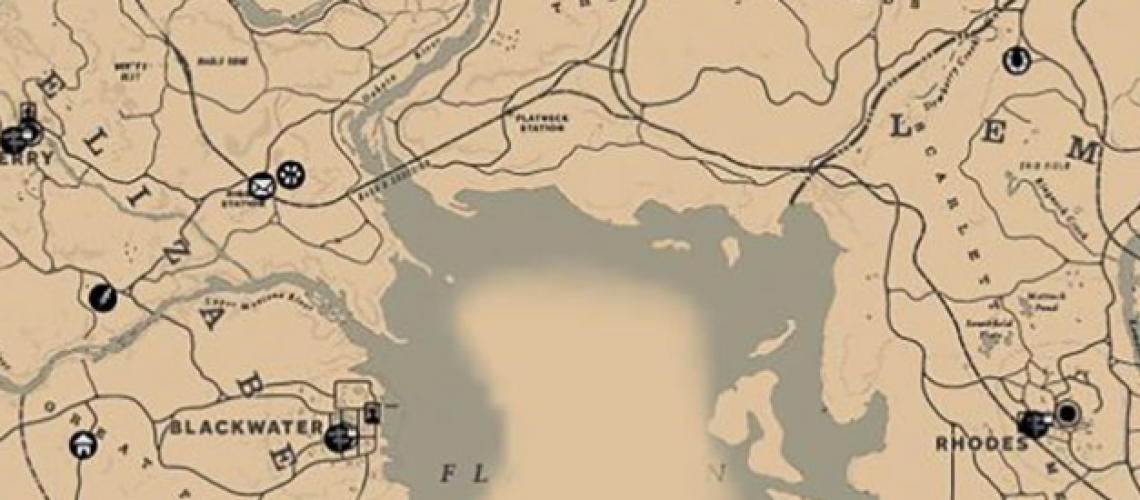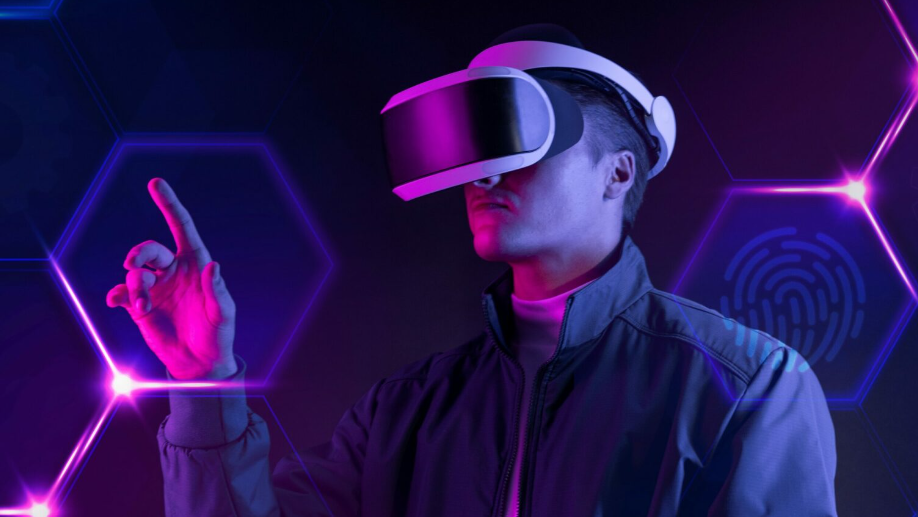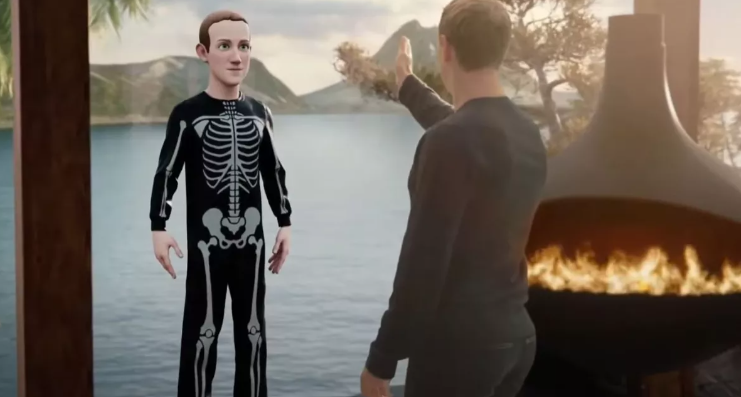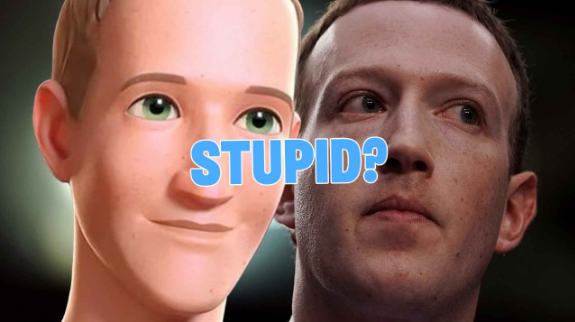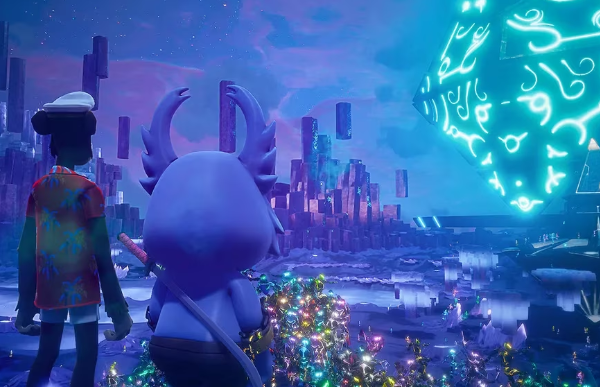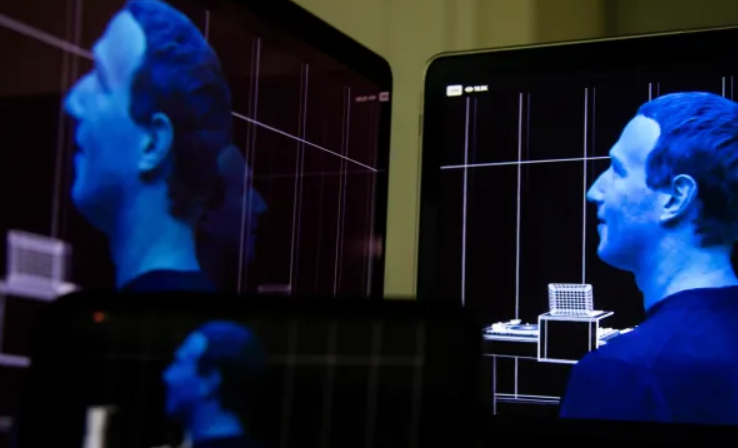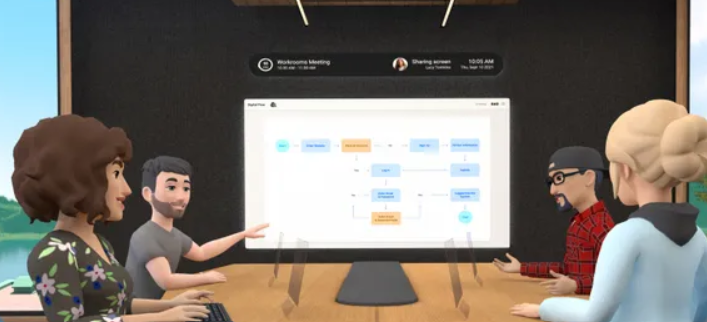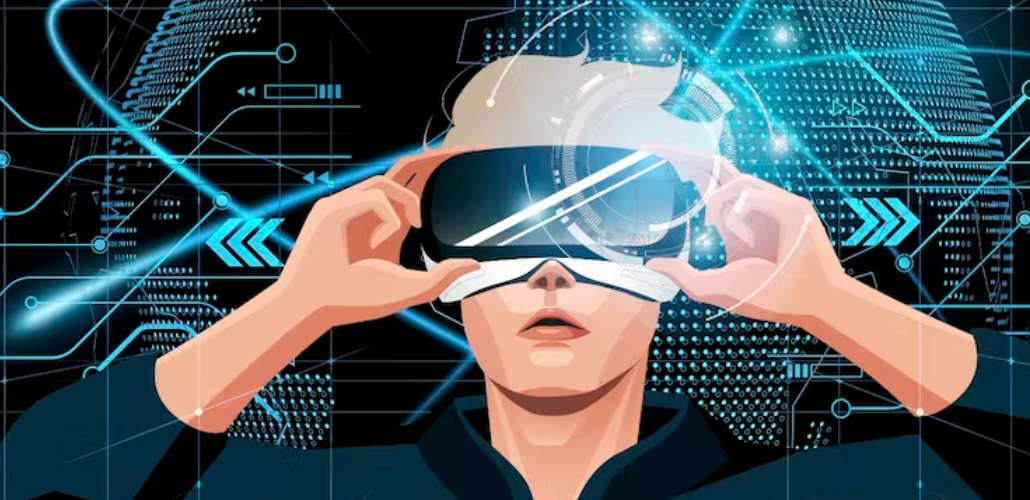Is it possible to create a map of the Metaverse? Not a technical one. But a real map: a geography that we can explore, traverse? The question opens up some interesting questions about what the Metaverse will become.
I want a map of the Metaverse.
I want that moment in Red Dead Redemption where, riding to Saint-Denis on horseback, you mistakenly turn left before Rhodes and find yourself deep in the swamp, discovering little shacks or facing the terrifying jaws of a crocodile.
You check the map again (the one at the top of this post) and realize you ended up deep in the swamp, north of where you intended.
You set course for the bright lights of St Denis, where you might shave and cut your hair, and spend an evening playing poker.
I want to explore the Metaverse in a spaceship. Like Stellaris, I want to be able to zoom in and out, from the galaxy level and then down to individual solar systems, planets.
Or maybe I’d like to board a pirate ship, and in the distance a group of islands beckons me, the bright flash of… are those apes? Are they really drinking martinis on the beach?
I want a map of the Metaverse because I like the idea of long, slow journeys. I like the idea of geography revealing itself, of being immersed in a place, of deciphering the paths and the history.
I like the idea of serendipity. of discovery.
I like the idea of islands or planets being grouped together: today a bunch of Star Wars themed planets, tomorrow a bunch of corporate islands where I’m going to attend conferences about bitcoin or whatever.
How We Got There: Journey Into The Metaverse
It makes sense, doesn’t it?
The Metaverse bills itself as the next generation of the Internet. It will be spatial, persistent, three-dimensional and interoperable.
Which means we’ll be attending a concert in the newly interoperable Fortnite, jumping in to hang out with the Bored Apes, meeting our team in a new Facebook conference room. All without the need for a separate download or a new account for each space that we enter.
In short, it’s, well, one universe, just one “meta”.
Surely it has a geography?
Yes, each world within that universe can have its own map. Fornite OpenIsland will have a different map than Decentraland.
But wouldn’t you expect these worlds to be…connected? You wouldn’t expect continents, perhaps? A constellation of stars from Star Wars?
Probably. Otherwise, isn’t it just a more 3D version of the Web?
But the concept of a map of the Metaverse highlights some of the profound challenges in the way our future shared universe is shaped.
Building a Map: A Thought Experiment
Here’s one version of what a map of the Metaverse could be. This is not a proposal, actually… it’s a thought experiment.
- A new “meta domain” layer is created that serves as a map of the Metaverse. In theory, the map itself could be three-dimensional, but for now let’s think of it as a giant blank grid. Each point on that grid contains metadata: the URL of the world it contains, perhaps even 3D objects that show what they look like from a distance.
- Worlds are registered on this map by their owners. They choose the placement and size. The more space you decide to take up (in theory to get more traffic, or as a way to contain multiple entry points), the more expensive it will be. So registering a single square can cost you $10. But each adjacent square costs an amount of 4 times. Two squares = $10 + $40. Four squares = $10 + $40 + $160 + $640 etc.
- You can MOVE your squares for a fee. The fee increases depending on how often you move it. This will encourage “worlds” to move in groups, while also discouraging too frequent “parking”.
- The map is based on the blockchain so that all placements and transactions are open and transparent.
- The basemap has an API. Anyone can build on top of the basemap. So if someone wants to create a space version of traveling across the map, they can. Every map creator can find new ways to monetize their map – one can add an entertainment layer on top and charge worlds for adding icons or whatever.
- How each mapmaker represents the journey between the worlds is up to them.
- The map starts off relatively small. It grows (perhaps additional ‘rings’ are added to the core map, extending its size) based on density.
Finally, the fees would be collected by a non-profit DAO. These fees would finance the base infrastructure of the Metaverse map and, in addition, would go towards:
- Open Metaverse standards and best practices. The Open Metaverse Initiative, for example, could be one of the organizations that receives funding from the DAO.
- Metaverse privacy and security research.
- Politics and legal defense. Initiatives that focus on lobbying governments.
[As a side note, Facebook is spending considerable effort and money lobbying the government on Metaverse standards. Do we really want Facebook to be the organization driving future standards?]
For the user, there is now a way to visualize the Metaverse. The “worlds” that are added to the map are making a statement: “we want to be a part of this larger interoperable universe…your avatar, your inventory, and your wallet are welcome here.”
As a user, you can travel through the Metaverse using the interfaces of the companies that build on top of the basemap: one is space-themed, another is corporate, and maybe they charge you for premium skins or premium data layers.
Over time, the map can become so large that specialized continents or map layers help us navigate it based on interests.
A sense of history will emerge: those few core worlds at the center and then spiraling galaxies spinning. Entire continents to socialize with, entire solar systems dedicated to Bored Apes.
Like the Wayback Machine, the map of the Metaverse is stored and its evolution can be seen instantly because the data is on the blockchain.
A Slower, Less Siloed Metaverse
As I say, this is not meant to be a proposal. It’s a thought experiment that allows us to explore if there are different ways to imagine how users will travel through the Metaverse.
I was trying to think of a few things:
- How do we let the community self-organize?
- Can we encourage the kind of serendipity that used to be so much more common on the Web? Can we find ways to discover new digital content that doesn’t rely solely on what we see on social media?
- Can a map help us slow down? What is the future equivalent of doom-scrolling in the Metaverse? If there is more sense of travel… of travel… can we help create more human interactions and serendipity?
- Can a map allow cultures to emerge and flourish? Can we create little corners of the Metaverse for different forms of self-expression?
- Can we find new ways to monetize ‘traffic’? If all we get are links and teleportation hubs…isn’t that the same model that led to big data silos like Google Search and social as the primary driver of traffic?
- How will governance occur in the Metaverse? Besides our avatars carrying ‘permissions’, how will things like violence or kid-friendly spaces self-organise? Can this happen in a way that avoids large data silos?
The Challenges of A Map
But even this thought experiment quickly runs up against bigger questions.
A ‘Map of the Metaverse’ leads us to questions about how it could best be built, what its limits are, and how it will be governed:
We want interoperability, but does this apply to everything? A lot of effort is being invested, for example, in ‘universal’ avatars. Whether you’re grabbing a Ready Player Me avatar or maybe one of RTFTK’s super secret CloneX NFT Avatars, you’re going to want to… well, be YOU, right? But what happens when you fall into a Star Wars world? Will you require a dress code? Or what about your inventory? Will you be allowed to bring a weapon to a knife fight?
Thinking of a map of the Metaverse is also a way of thinking about how we will transition between spaces. You could be traveling the Metaverse in a spaceship but, like a crew member on Star Trek, you might need to take on the local culture and costumes to ‘do no harm’.
What effect do links and teleport hubs have on audience aggregation? Most of the current work on the Metaverse assumes some sort of 3D-style URL. It makes sense: a URL is really just a way to request content from some distant server. And so a Metaverse-URL is a way for a user’s machine to request a ‘world’ from a distant server. But doesn’t this also risk the same traffic shaping and user tracking problems of the past? Don’t we just end up turning to search giants and social media portals as our gateways to the Metaverse? What would a more community-focused ‘quest’ look like? Could it look a bit like a map?
Not all worlds will be alike. In fact, one world could be a small room in which you display 3D scans of your cat. To the extent that the small room can be linked to other small rooms, is it a world? Maps create a challenge in that way – you can’t necessarily map the actual size of a world on a ‘meta-map’. But then, if all we have is a bunch of separate 3D space experiences, is there a Metaverse? Or is it just a 3D Web? A 3D Web supported by a bunch of optional standards, perhaps, but not really what people mean by the next version of the Internet (or, indeed, the Metaverse).
Will 3D experiences bridge the physical world? By most definitions, the Metaverse encompasses AR, VR, mobile, etc. And you probably should! Computers don’t care if a ‘world’ is real or not. They interpret spatial relationships in roughly the same way. And as a user, you might want to attend an Arianna Grande concert, and do so by either logging into a fully immersive world or having it appear in my living room. For the developer, a single source of truth can be delivered to multiple devices and interfaces.
I mentioned earlier that I think of Sketchfab as a headless CMS for the Metaverse. By which I meant that Metaverse content will often be separate from delivery interfaces. If Metaverse doesn’t privilege a particular interface, then AR devices get the right to be included. But how would a map of the Metaverse apply when distributed in reality itself?
Do You Want To Browse… Or Travel?
My little thought exercise on maps opened up all sorts of questions: about standards, governance, user experiences, and whether we’re going to create truly spatially connected worlds or whether we’re creating a bunch of worlds that are only loosely connected.
But it also made me realize that there is a range of possible futures. We don’t necessarily have to choose: we can navigate, teleport to small 3D spaces from Instagram, for example, and also travel, set sail on my imaginary ship and discover new worlds, reveling in the serendipity of a new universe.
Do you want to sail… or travel? And if both, what are the circumstances that would make you choose?
And above all: do you want the Metaverse to evolve as a grassroots, community-driven cultural phenomenon… or do you want it to end up on the same path that brought us to the Web as it is today, dominated by a few silos, governed by the control and measurement of our clicks?
The way we develop a map of the Metaverse might not prevent us from the more dystopian future that fiction warns us of, but at least thinking about it allows us to wonder how to get, like my poor tired horse, to the well-lit streets. from St Denis, ready for a bath, a shave and a break from the weary journey.

